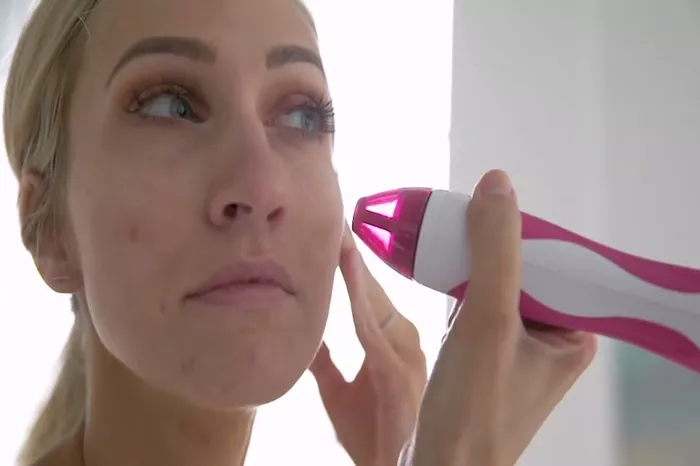Microdermabrasion is a popular cosmetic procedure that has gained traction in recent years, particularly with the rise of at-home beauty treatments. This technique involves the mechanical exfoliation of the skin’s outer layer, aiming to improve skin texture, reduce signs of aging, and enhance overall complexion. As more individuals seek convenient and cost-effective skincare solutions, the question arises: Is at-home microdermabrasion worth it? This article explores the benefits, potential drawbacks, and essential considerations surrounding at-home microdermabrasion, providing a comprehensive guide for those contemplating this treatment.
Understanding Microdermabrasion
What is Microdermabrasion?
Microdermabrasion is a non-invasive cosmetic procedure that gently exfoliates the skin using a specialized device. The process removes dead skin cells from the surface, promoting cell turnover and revealing fresher, healthier skin underneath. This treatment can be performed in professional settings, such as dermatology clinics or spas, or at home with various kits and devices available on the market.
How Does It Work?
The procedure typically involves the use of a handheld device equipped with an abrasive surface or a spray of microcrystals. During the treatment, the device is moved across the skin, effectively sloughing off the outer layer of dead skin cells. This process stimulates blood circulation and encourages the production of collagen, a vital protein that maintains skin elasticity and firmness.
Benefits of Microdermabrasion
Microdermabrasion offers several benefits, including:
Improved Skin Texture: Regular treatments can help smooth rough patches and enhance overall skin texture.
Reduction of Fine Lines and Wrinkles: By promoting collagen production, microdermabrasion can diminish the appearance of fine lines and wrinkles.
Minimized Pore Size: The exfoliation process can help unclog pores, making them appear smaller and less noticeable.
Enhanced Absorption of Skincare Products: With the outer layer of dead skin removed, active ingredients in skincare products can penetrate more effectively, maximizing their benefits.
Brightened Complexion: The removal of dull, dead skin cells can result in a more radiant and youthful appearance.
See also: What does microdermabrasion do for your face?
At-Home Microdermabrasion Kits
Overview of At-Home Kits
At-home microdermabrasion kits have become increasingly popular, offering individuals a convenient way to achieve professional-like results without the need for salon visits. These kits typically include a handheld device, exfoliating crystals, and various attachments designed for different areas of the face and body.
Types of At-Home Devices
Crystal Microdermabrasion Devices: These devices use fine crystals to exfoliate the skin. They often come with vacuum suction to remove dead skin cells and debris.
Diamond Microdermabrasion Devices: Utilizing a diamond-tipped wand, these devices provide a more controlled and effective exfoliation. They are generally considered more advanced than crystal devices.
Exfoliating Masks and Pads: Some kits include chemical exfoliants, such as glycolic acid or salicylic acid, which can complement the mechanical exfoliation process.
Pros and Cons of At-Home Microdermabrasion
Pros
Cost-Effective: At-home kits are typically less expensive than professional treatments, making them accessible for regular use.
Convenience: Users can perform treatments at their convenience, eliminating the need for appointments.
Customization: Individuals can tailor their treatment frequency and intensity based on their skin’s needs.
Cons
Risk of Overuse: Without professional guidance, users may over-exfoliate, leading to skin irritation or damage.
Variable Results: Results may not be as pronounced as professional treatments, which can utilize more advanced technology and techniques.
Limited Knowledge: Users may lack the expertise to assess their skin’s condition accurately, potentially leading to unsuitable treatment choices.
Is At-Home Microdermabrasion Worth It?
Evaluating Effectiveness
While at-home microdermabrasion can provide benefits, it is essential to manage expectations. Professional treatments are typically more intense and can yield quicker, more noticeable results. However, with consistent use, at-home devices can improve skin texture and appearance over time.
Safety Considerations
Before starting at-home microdermabrasion, individuals should consider the following:
Skin Type: Those with sensitive skin, active acne, or certain skin conditions should consult a dermatologist before attempting at-home treatments.
Technique: Proper technique is crucial to avoid skin damage. Users should carefully follow instructions and avoid excessive pressure during treatment.
Frequency: Most experts recommend spacing treatments every two weeks to allow the skin to recover.
Expert Recommendations
Dermatologists often advise consulting with a professional before beginning at-home microdermabrasion. A consultation can help determine if this treatment is suitable for an individual’s skin type and concerns. Additionally, professionals can provide guidance on the best products and techniques for optimal results.
Conclusion
At-home microdermabrasion can be a worthwhile addition to a skincare routine for those seeking to improve their skin’s texture and appearance. While it may not replace the effectiveness of professional treatments, it offers a convenient and cost-effective alternative for regular maintenance. By understanding the benefits, risks, and proper techniques, individuals can make informed decisions about incorporating at-home microdermabrasion into their beauty regimen. Ultimately, the key to success lies in setting realistic expectations, prioritizing skin health, and seeking professional advice when necessary.
Related topic:
How To Use Diamond Microdermabrasion Machine?
7 Steps To Using Neutrogena Microdermabrasion
How do I get the best results from microdermabrasion?

